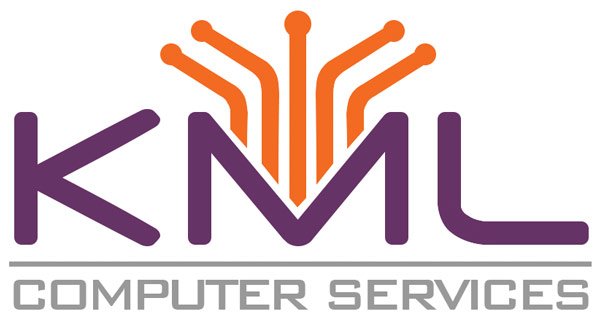
By following structured cabling standards, businesses improve performance, enhance safety, and prepare for future technological advancements. In this blog, we’ll explore what structured cabling is, why standards matter, the key guidelines every office should know, and how certified installers ensure compliance.
What Is Structured Cabling?
A structured cabling system is a standardized approach to designing and installing network cabling that supports data, voice, video signals, and A/V applications. Unlike point-to-point cabling, which can be messy and difficult to scale, structured cabling uses a modular and organized design.
This system makes it easier for IT teams to troubleshoot issues, expand networks, and maintain long-term efficiency. By adhering to structured cabling standards, businesses can ensure compatibility across devices and vendors, reducing downtime and maximizing reliability.
Subsystems of Structured Cabling
Structured cabling is more than just a bundle of cables behind your office walls, it’s a carefully designed system with six distinct subsystems. Each plays a role in keeping your network reliable, scalable, and efficient.
Backbone Cabling
Backbone cabling connects telecommunications rooms, equipment rooms, and entrance facilities. In business environments, this subsystem ensures seamless data transfer between different floors or buildings. For organizations with multiple locations, backbone cabling is essential for maintaining consistent connectivity.
Horizontal Cabling
Horizontal cabling runs from telecommunications closets to individual work areas. This is the part of the system most employees rely on daily for internet, VoIP, and business applications. Using the right low voltage cabling for offices in this subsystem reduces downtime and boosts productivity.
Work Area Components
Work areas include the outlets, patch cords, and connectors that employees physically interact with. Properly designed work areas give staff flexible, dependable access to the network without clutter or confusion.
Telecommunications Rooms and Closets
These serve as distribution hubs where cabling connects to networking equipment. A well-organized telecommunications closet reduces troubleshooting time and keeps your IT infrastructure easier to manage.
Entrance Facilities
Entrance facilities are the point where outside services, such as internet service providers and phone carriers, connect to your internal network. Protecting and properly configuring this entry point is crucial for both security and performance.
Equipment Rooms and Data Centers
Equipment rooms house servers, switches, and networking gear that support business operations. Designing these spaces with structured cabling standards ensures maximum reliability for critical applications like cloud integration and data backups.
Together, these six subsystems form the foundation of a standards-compliant office network. Partnering with a qualified network cabling company helps ensure that each subsystem is designed to meet current needs and future growth.
Business Use Cases for Structured Cabling
Structured cabling systems are versatile, supporting far more than just standard internet access. Businesses across industries depend on them for a wide range of applications:
- Security Systems: Modern security cameras, access control panels, and alarm systems rely on structured cabling. Using Cat5e, Cat6, or fiber optic installation for businesses ensures smooth video feeds and dependable connectivity between devices and recording systems.
- Intercoms and Paging Systems: From schools to medical offices, intercoms are a vital communication tool. Low voltage cabling for offices makes these systems reliable and easy to expand as a company grows.
- Multi-Site Offices: For organizations operating across multiple locations, structured cabling ensures all branches stay connected through a consistent infrastructure. This simplifies IT management and allows for uniform policies across every site.
- Video Conferencing and Collaboration Tools: High-bandwidth applications like Microsoft Teams, Zoom, and VoIP phone systems demand a stable cabling foundation. Structured cabling minimizes dropped calls and lag, keeping business communication seamless.
- Cloud and Data-Intensive Workflows: As businesses adopt cloud storage and SaaS platforms, fiber optic installation for businesses provides the bandwidth and reliability needed to handle larger file transfers and continuous online access.
These use cases demonstrate why investing in business structured cabling services is critical for organizations that want to future-proof their IT infrastructure.
Why Standards Matter in Office Cabling
Office cabling standards are crucial for keeping technology systems consistent and future-ready. When organizations follow TIA/EIA cabling standards, they benefit from:
- Interoperability and Vendor Neutrality: Networks can support hardware from multiple vendors without compatibility problems.
- Reduced Troubleshooting Time: Proper labeling and documentation simplify identifying and fixing issues.
- Improved Organization and Performance: Correct cable routing and separation reduce electromagnetic interference and enable faster data transmission.
By standardizing your office cabling, you reduce long-term costs and simplify network infrastructure management.
Key Structured Cabling Standards Explained
The Telecommunications Industry Association (TIA) and Electronic Industries Alliance (EIA) have established several important standards that define structured cabling best practices:
TIA/EIA-568: The Gold Standard
This standard governs most structured cabling systems in commercial buildings and office buildings. It defines:
- Cable Categories: Cat5e, Cat6, Cat6a, Cat7, and fiber optic cables.
- Connector Types: RJ-45 connectors and other approved connecting hardware.
- Performance Specification: Requirements for bandwidth, speed, and data rates.
TIA/EIA-569: Pathways and Spaces
Defines proper design and use of conduits, cable trays, equipment rooms, entrance facilities, and telecommunications closets, ensuring safety considerations and scalability.
TIA/EIA-606: Labeling and Documentation
Outlines how cables, patch panels, and outlets should be labeled and documented to support efficient cable management.
TIA/EIA-607: Grounding and Bonding
Focuses on grounding and bonding practices to enhance electrical safety and minimize hazards in low voltage wiring and high voltage wiring environments.
Common Cabling Categories
Choosing the correct cabling types directly impacts office speed, reliability, and bandwidth:
- Cat5e: A cost-effective option for basic office setups, supports data transfer up to 1 Gbps.
- Cat6: Ideal for modern businesses, supports up to 10 Gbps at shorter distances.
- Cat6a: Offers improved shielding, higher performance, and backward compatibility, suited for high performance cabling environments.
- Fiber Optic Cables: The best choice for long-distance, high-speed transmission in data centers, premises cabling, and networks preparing for emerging technologies.
Selecting the right cable ensures your office remains competitive and adaptable to future technological advancements.
Design Considerations for a Standards-Compliant Office Setup
When planning structured cabling installation, keep these cabling requirements in mind:
- Cable Routing: Use organized pathways like conduits, trays, and horizontal cross connects to reduce interference and simplify maintenance.
- Patch Panels and Labeling: Centralize and clearly label all cabling components for easier upgrades and troubleshooting.
- Avoiding Interference: Keep data cables separated from power lines to minimize electromagnetic interference.
- Certified Installers: Work with professionals who follow industry standards, such as the American National Standards Institute and international standard guidelines, to ensure compliance and manufacturer warranties.
Mistakes to Avoid in Office Cabling
Improper cabling installation can cost businesses time and money. The most common mistakes include:
- Mixing Standards: Inconsistencies between standardized cabling systems create compatibility and performance issues.
- Poor Labeling: Without clear labeling, troubleshooting and expansions in telecommunications cabling become time-consuming.
- Wrong Cable Types: Using low quality cabling systems that don’t meet current or future bandwidth needs limits scalability and performance characteristics.
Avoiding these pitfalls ensures your network infrastructure remains efficient, secure, and future-ready.
How We Ensure Compliance
At KML Computer Services, our certified technicians follow structured cabling standards to design and install structured cabling systems that are reliable, scalable, and standards-compliant.
From backbone cabling and horizontal cabling to entrance facilities and consolidation points, we deliver complete structured cabling services that support data communications, video signals, and modern office technology. We combine industry expertise with hands-on experience to create networks that support your business today while preparing for tomorrow’s demands.
Want a compliant and future-ready network? Book a site assessment today with KML Computer Services.
Sidney Rossi with over 25 years of software sales, including hardware and software, is not only seen as a leader in the technology industry, but a proven performer.

